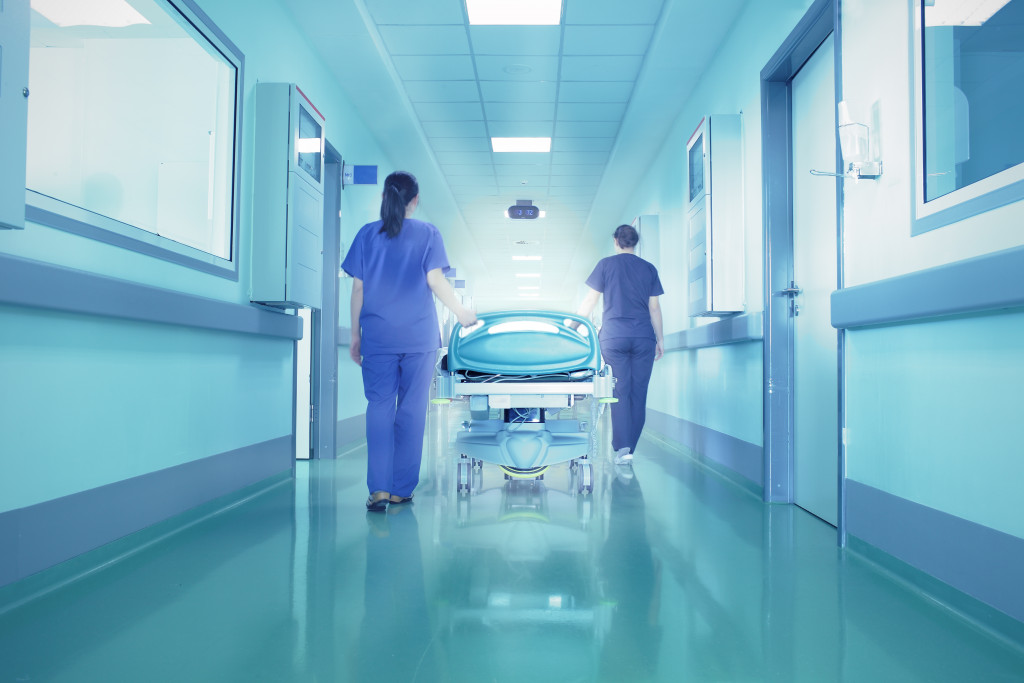Disclaimer: This website provides health information for educational purposes only and is not a substitute for professional medical advice, diagnosis, or treatment. Always seek the guidance of a qualified healthcare provider with any questions you may have.
Hospitals must ensure the safety of all patients. This means that they must take measures to protect their patients from harm, both physical and emotional. To do this, hospitals create several policies and procedures that help keep everyone safe. This duty of care extends to all patients, regardless of their age, gender, or other factors.
Learn more about how hospitals ensure safety for all patients below.
1. Cleanliness and sterility
One of the most critical ways hospitals ensure patient safety is by maintaining a clean and sterile environment. This helps to prevent the spread of infection and disease. Hospitals must follow strict guidelines for cleaning and sterilizing equipment and surfaces. They must also ensure that their staff members are adequately trained in infection control.
Because cleanliness is so important, hospitals typically have an infection control department to ensure that the facility meets all sterility standards. This department typically consists of nurses and other medical professionals with specialized training in infection control.
Other ways that hospitals maintain a clean environment include:
• Providing hand-washing stations throughout the facility
• Encouraging staff and visitors to wash their hands often
• Wearing gloves and other personal protective equipment (PPE)
• Disinfecting surfaces regularly
2. Building safety
Hospitals must also ensure that their buildings are safe for patients, staff, and visitors. Many hospitals have security staff who patrol the premises and respond to safety concerns. Hospitals may also have security cameras and other security systems in place.
The physical structure of the hospital itself must also be safe. This means that all hospital areas must be up to code and meet all safety standards. Hospitals typically have a team of engineers and other professionals responsible for ensuring that the building is safe. Ensuring safety is always a top priority, from expert self-performing general contractors for building the structures to full-time staff dedicated to maintaining the facilities.
Additionally, hospitals must have emergency plans in place in case of a fire, severe weather event, or other disasters. These plans must be well-documented and practiced regularly. These disasters are common and often unpredictable, so hospitals need to prepare for anything.

3. Medication safety
Another way hospitals ensure patient safety is by taking measures to prevent medication errors. Medication errors can occur when patients are given the wrong medication, the wrong dose of drugs, or when they have an adverse reaction to a cure. These can be deadly mistakes, so hospitals must have systems and procedures to prevent them.
Hospitals typically have a pharmacy department responsible for dispensing medication. This department must follow strict guidelines to administer the drugs correctly. They must also keep track of all the dispensed medicine and ensure that the correct patient receives them.
Hospitals also have to educate their patients about their medication. This includes letting them know what the drug is for, how to take it correctly, and what side effects to expect. Patients should also be encouraged to ask questions if they are unsure about anything.
4. Patient rights
All patients have certain rights that health providers must respect. These rights include the right to privacy, informed consent, and the right to refuse treatment. Hospitals must ensure that all patients know their rights and that their staff respects these rights.
Hospitals typically have a patient advocate or ombudsman responsible for ensuring that patients’ rights are respected. This person is usually a staff member who has been specifically trained in patient rights. They are usually the first point of contact for patients with concerns or complaints.
Of course, lawyers are also involved in patient rights. They may be consulted when there are questions about a patient’s rights or when a patient feels that their rights have been violated. They may also represent patients in court if necessary. This is usually a last resort, but it is essential to know it is an option.
5. Staff training and education
Hospitals can be dangerous, so staff needs to be appropriately trained and educated on safety procedures. All new staff members should receive safety training before they start work. This training should cover infection control, fire safety, and general safety procedures.
Hospitals should also provide ongoing safety training for all staff members. This can be in regular safety meetings, online courses, or other means. It’s essential for staff to stay up-to-date on safety procedures to be adequately prepared in an emergency.
This training can protect both hospital staff and patients from harm. When staff members are appropriately trained, they are less likely to make mistakes that could put themselves or others at risk.
Hospitals are complex and dangerous places. However, there are many ways that they ensure safety for all patients. From building security to medication errors, hospitals take many measures to protect their patients. By taking these precautions, hospitals can provide a safe and effective environment for their patients and staff.




